Celery, with its crisp stalks and refreshing flavor, is a staple in many dishes, from soups to salads.
If you’ve ever considered growing this versatile vegetable in your garden, you’re in for a rewarding experience.
In this comprehensive guide, we’ll explore the art of growing and caring for celery, sharing valuable insights and tips along the way.
Benefits of Growing Celery
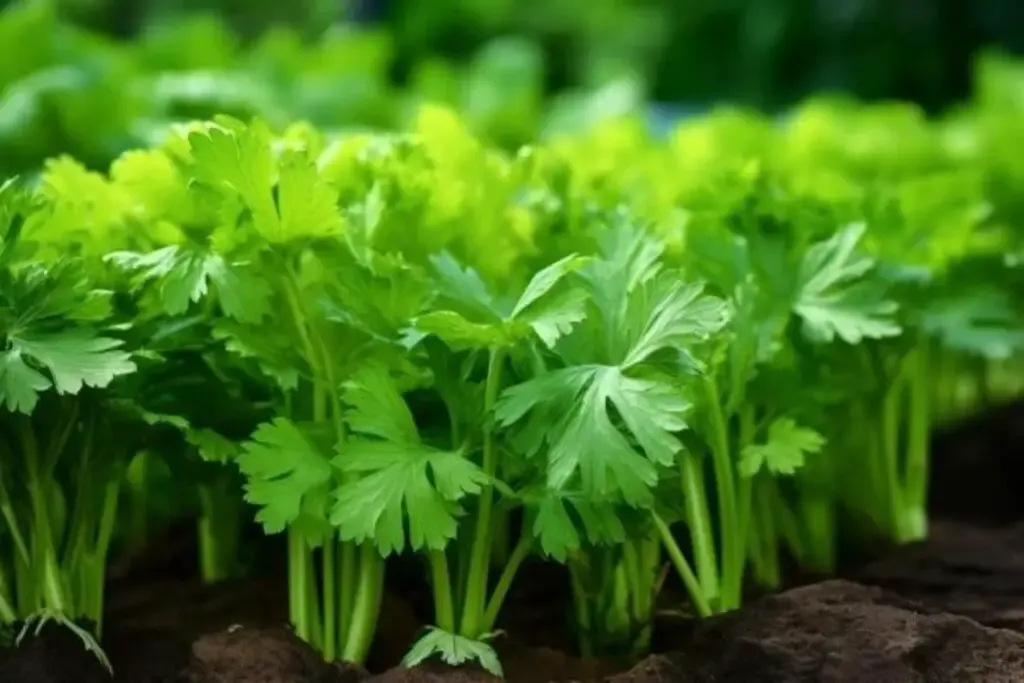
1. Healthy Snacking
Celery is a low-calorie snack that’s packed with fiber, vitamins (especially vitamin K and vitamin C), and minerals. It’s a nutritious option for guilt-free munching.
2. Culinary Versatility
Celery is a culinary workhorse, lending its distinctive flavor to soups, stews, salads, and snacks. Freshly harvested celery from your garden imparts unbeatable flavor to your dishes.
3. Long Storage
Homegrown celery can be stored for an extended period if properly handled and kept in the right conditions.
This means you can enjoy the fruits of your labor well into the fall and winter months.
My Favorite Celery Varieties
Now, let’s explore some celery varieties that I particularly enjoy growing in my garden.
These varieties are not only flavorful but also relatively easy to cultivate, making them perfect for gardeners of all levels:
1. Giant Pascal
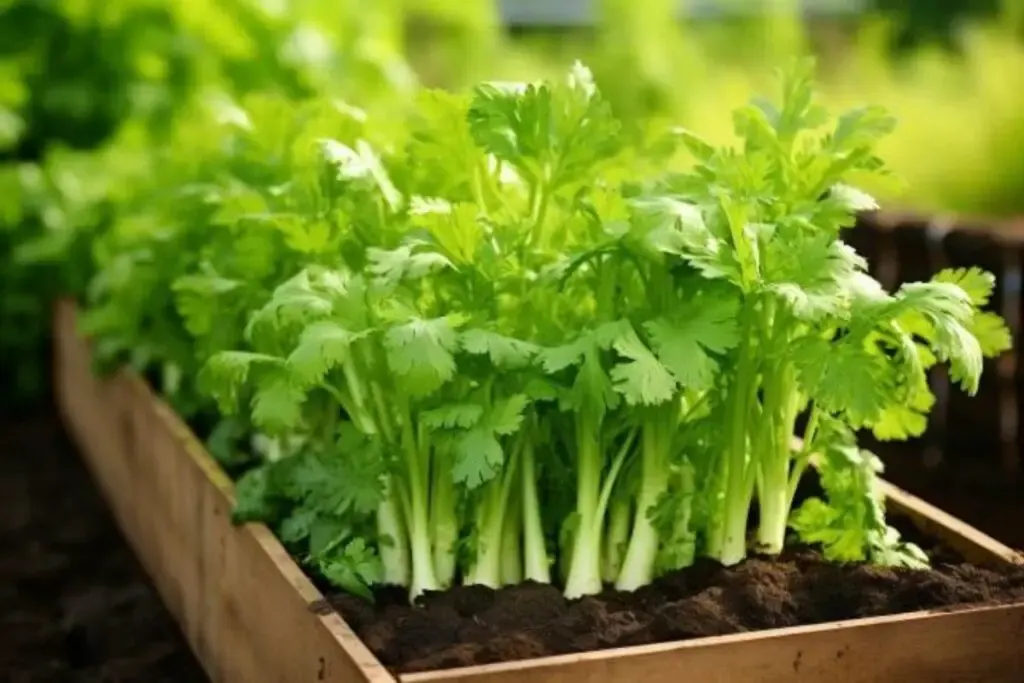
Giant Pascal is a classic celery variety known for its crisp, thick stalks and excellent flavor. It’s relatively easy to grow and is a favorite among many gardeners due to its reliable performance.
2. Tango
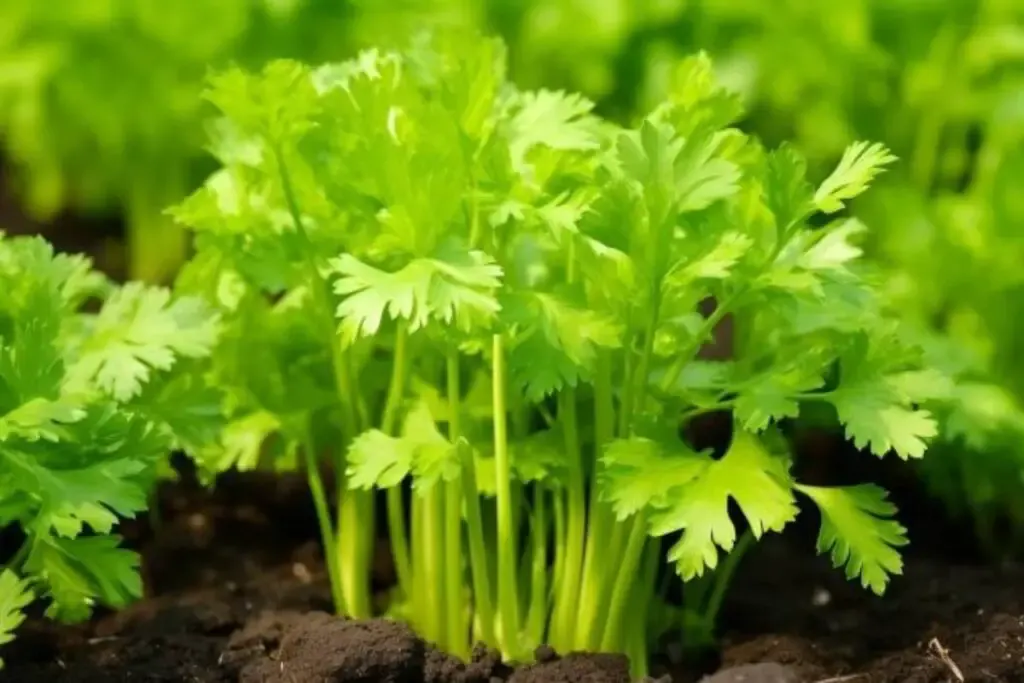
Tango celery is a compact variety that’s well-suited for smaller garden spaces. It produces tender, flavorful stalks and matures relatively quickly, making it an excellent choice for impatient gardeners.
3. Utah 52-70
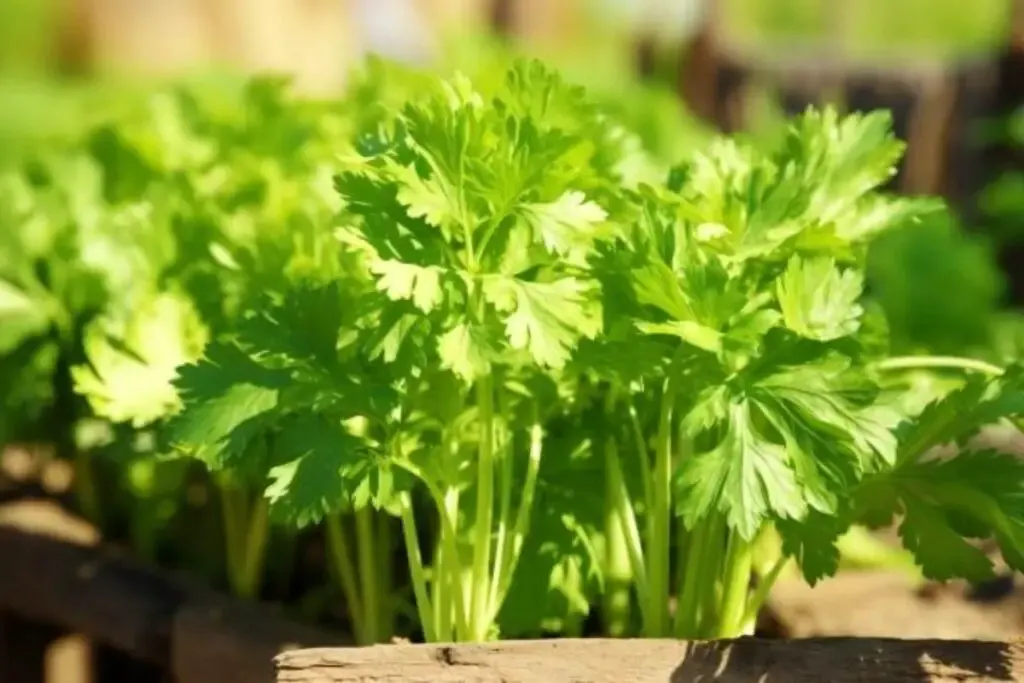
Utah 52-70 celery is a popular heirloom variety known for its exceptional taste and disease resistance. It’s a reliable performer, even in less-than-ideal growing conditions, making it a favorite for beginners.
Celery Care
Caring for your celery plants is essential to ensure a bountiful harvest of those crisp, flavorful stalks. In this section, we’ll cover various aspects of celery care, from planting to providing the right conditions for optimal growth.
Planting
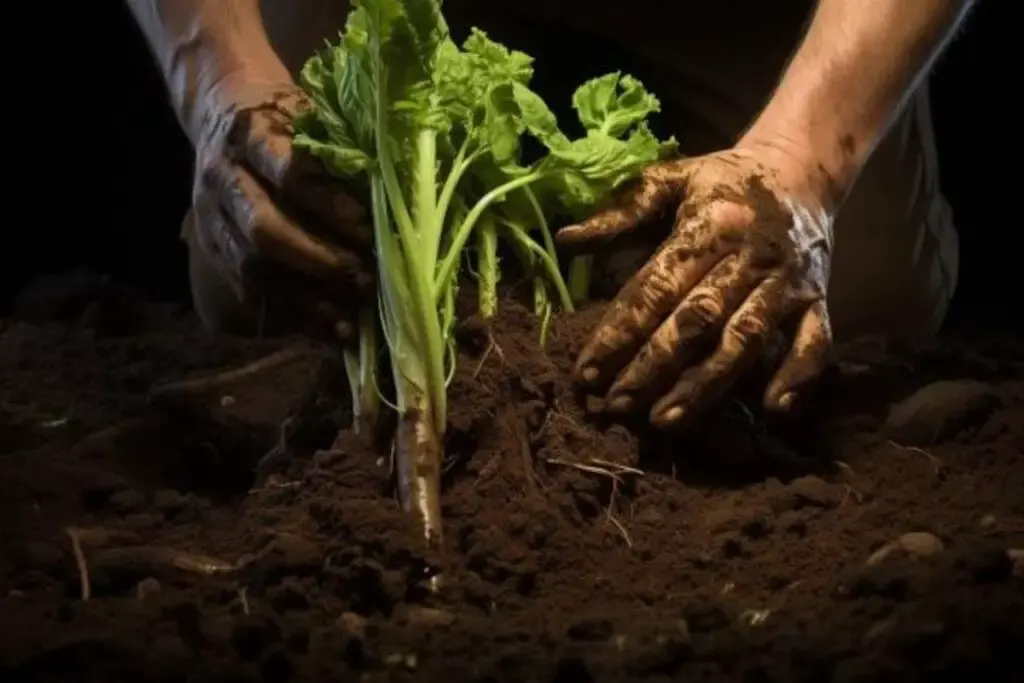
Proper planting is the first step in growing healthy celery. Here’s what you need to know:
- Select the Right Location: Choose a planting location with partial shade or filtered sunlight. Celery prefers cooler conditions and benefits from some protection from intense sun.
- Soil Preparation: Celery thrives in well-draining, nutrient-rich soil. Prepare the soil by amending it with compost or organic matter to improve fertility.
- Spacing: Plant celery seedlings 6-10 inches apart in rows, with rows spaced 18-24 inches apart. Providing enough space ensures good air circulation and prevents overcrowding.
Light
Celery appreciates a balance between sun and shade. Here’s what you need to know about providing the right light conditions:
- Partial Shade: Celery does best in partial shade, where it receives 4-6 hours of sunlight daily. In hot climates, this protection from intense sun helps prevent wilting and bolting.
Soil
Well-prepared soil is crucial for healthy celery growth. Pay attention to soil quality:
- Rich Soil: Celery thrives in soil rich in organic matter. Compost or well-rotted manure can enhance soil fertility.
- pH Level: Aim for a slightly acidic to neutral soil pH, ideally around 6.0 to 7.0.
Water
Proper watering is vital to prevent issues like cracking and bitterness in celery. Here are some watering tips:
- Consistent Moisture: Keep the soil consistently moist, but avoid waterlogged conditions. Celery requires regular watering, especially during dry periods.
- Mulch: Apply a layer of mulch around the base of celery plants to help retain moisture and regulate soil temperature.
Temperature and Humidity
Celery thrives in cool, temperate conditions. Here’s what to consider:
- Temperature: Celery prefers temperatures between 60°F and 70°F (15°C to 21°C). It can tolerate light frost but should be protected from freezing temperatures.
- Humidity: Adequate humidity levels are essential for celery. Consider using a humidifier or misting the plants during dry spells, especially in indoor or greenhouse settings.
Fertilizer
Feeding your celery plants with the right nutrients is key to a successful harvest:
- Balanced Fertilizer: Use a balanced, slow-release fertilizer with a ratio of 10-10-10 or 14-14-14. Apply fertilizer according to the manufacturer’s instructions, usually at planting and during the growing season.
Harvesting Celery
Harvesting celery is a satisfying culmination of your gardening efforts. Here’s how to do it:
- Stalk-by-Stalk: Celery is typically harvested stalk by stalk rather than uprooting the entire plant. Start by selecting outer stalks that have reached the desired size and thickness.
- Cutting Method: Use a sharp knife or garden shears to cut the celery stalk cleanly at the base, close to the soil level. Be careful not to damage neighboring stalks or the plant crown.
- Continual Harvest: Continue harvesting stalks as they reach maturity, allowing the inner stalks to develop further. This allows for a prolonged harvest period.
Pruning
Pruning celery is not as common as with some other vegetables, but it can help promote healthy growth:
- Leaf Removal: Remove any yellowing or damaged leaves regularly to allow the plant to channel its energy into stalk production.
Propagating
Celery is primarily grown from seeds, but you can attempt to propagate it from cuttings:
- From Seeds: Growing celery from seeds is the most common method. Start seeds indoors or directly in the garden according to the recommended spacing and depth.
- From Cuttings (Advanced): While less common, celery can be propagated from stem cuttings. Take a cutting with at least one node, allow it to root in a well-draining soil mix, and transplant it once it has established roots. This method is more challenging and typically not recommended for beginners.
How to Grow Celery From Seed
Growing celery from seed is a rewarding experience. Here’s a step-by-step guide:
- Select Quality Seeds: Choose high-quality celery seeds from a reputable source. Pay attention to the variety and its suitability for your climate.
- Starting Indoors: In regions with shorter growing seasons, start celery seeds indoors 8-10 weeks before the last expected frost date. Use biodegradable pots or seed trays with a quality seed starting mix.
- Transplanting: Once seedlings have at least two true leaves and all danger of frost has passed, transplant them into the garden. Space seedlings 6-10 inches apart.
- Provide Proper Care: Keep the soil consistently moist, and use mulch to retain moisture. Fertilize according to recommendations, and watch for signs of pests and diseases.
Growing in Pots
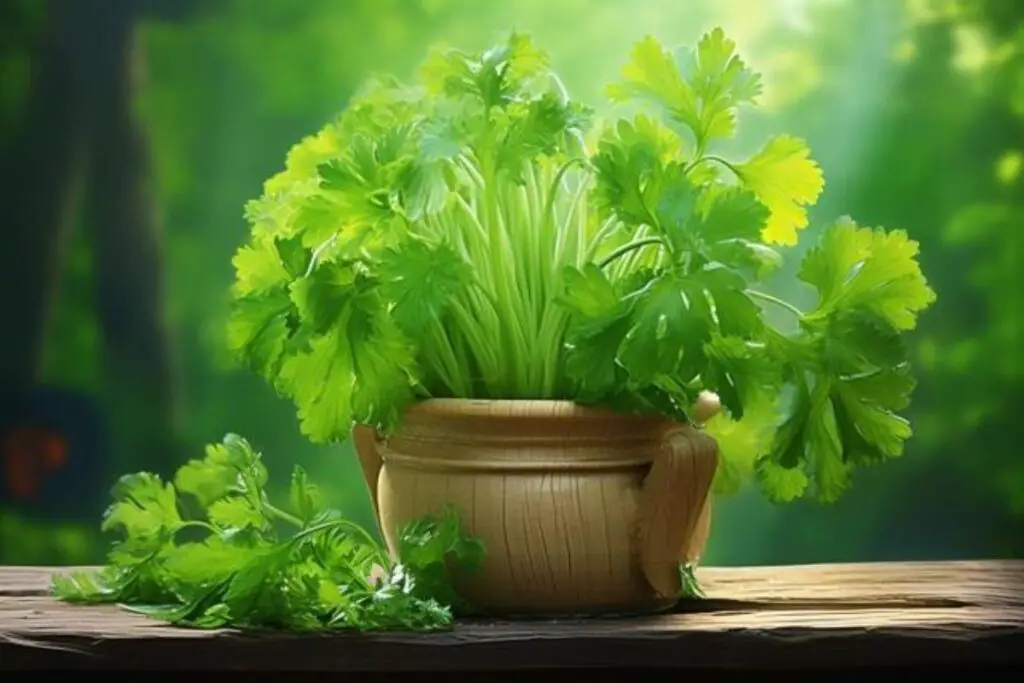
If you have limited garden space, you can successfully grow celery in pots or containers:
- Container Size: Choose a deep container with a capacity of at least 5 gallons for each celery plant. Ensure the container has good drainage.
- Potting Mix: Use a high-quality potting mix enriched with organic matter for optimal growth.
- Spacing: Plant one celery seedling per container. Adequate spacing ensures healthy root development.
- Water and Fertilize: Container-grown celery may require more frequent watering and feeding. Monitor soil moisture and use a balanced, slow-release fertilizer.
Overwintering
Celery is typically grown as a cool-season crop, and it can be challenging to overwinter, especially in areas with harsh winters. However, if you live in a region with milder cold spells, you can attempt to overwinter celery for extended harvests:
- Protect from Frost: Cover celery plants with row covers or cloths to shield them from frost and freezing temperatures. Mulch heavily around the base of the plants to provide insulation.
- Harvest Outer Stalks: Before the coldest temperatures arrive, consider harvesting the outer stalks of celery to reduce the plant’s overall size and vulnerability to cold.
- Use Cold Frames: If you have access to a cold frame or greenhouse, you can transplant celery into these structures for added protection during the winter months.
Transplanting
Transplanting celery seedlings can be a useful technique for extending your growing season or ensuring a strong start for your plants:
- Timing: Start celery seeds indoors 8-10 weeks before your last expected frost date. Transplant seedlings outdoors when they have at least two true leaves and all danger of frost has passed.
- Harden Off: Gradually acclimate seedlings to outdoor conditions by exposing them to the outdoors for a few hours each day over the course of a week.
- Spacing: Plant celery seedlings 6-10 inches apart in rows, similar to direct-seeded plants.
- Handle with Care: When transplanting, handle the seedlings gently to avoid damaging the delicate roots or stems.
Common Pests & Diseases
While celery is a relatively hardy plant, it can still encounter some common pests and diseases. Here are a few issues you may face and how to address them:
- Aphids: Aphids are small insects that can infest celery plants. Use a strong spray of water or insecticidal soap to control them.
- Slugs and Snails: These pests can damage celery leaves. Use physical barriers like copper tape or diatomaceous earth to deter them.
- Septoria Leaf Spot: This fungal disease can cause brown spots on celery leaves. Remove and destroy infected leaves, and use fungicides if necessary.
- Bacterial Soft Rot: This disease can affect celery during periods of high humidity. Proper spacing and good air circulation can help prevent it.
- Leaf Blight: Leaf blight can affect celery during wet weather. Improve air circulation and use fungicides if necessary.
In your celery-growing journey, occasional encounters with pests and diseases are a part of the process. Remember that with vigilance and proper care, you can overcome these challenges and enjoy the satisfaction of harvesting your own homegrown celery.
Whether you’re aiming for a bountiful harvest or simply seeking the joy of nurturing these crunchy stalks, celery can be a rewarding addition to your garden.
Happy gardening, and may your celery thrive and add a refreshing touch to your culinary creations!

